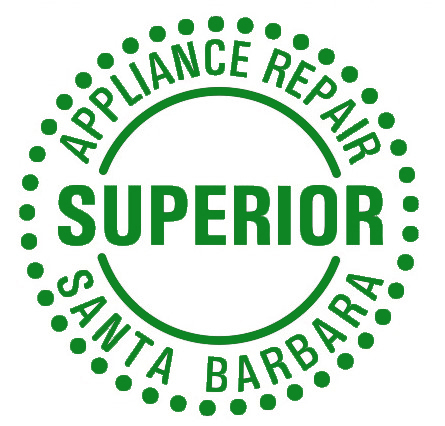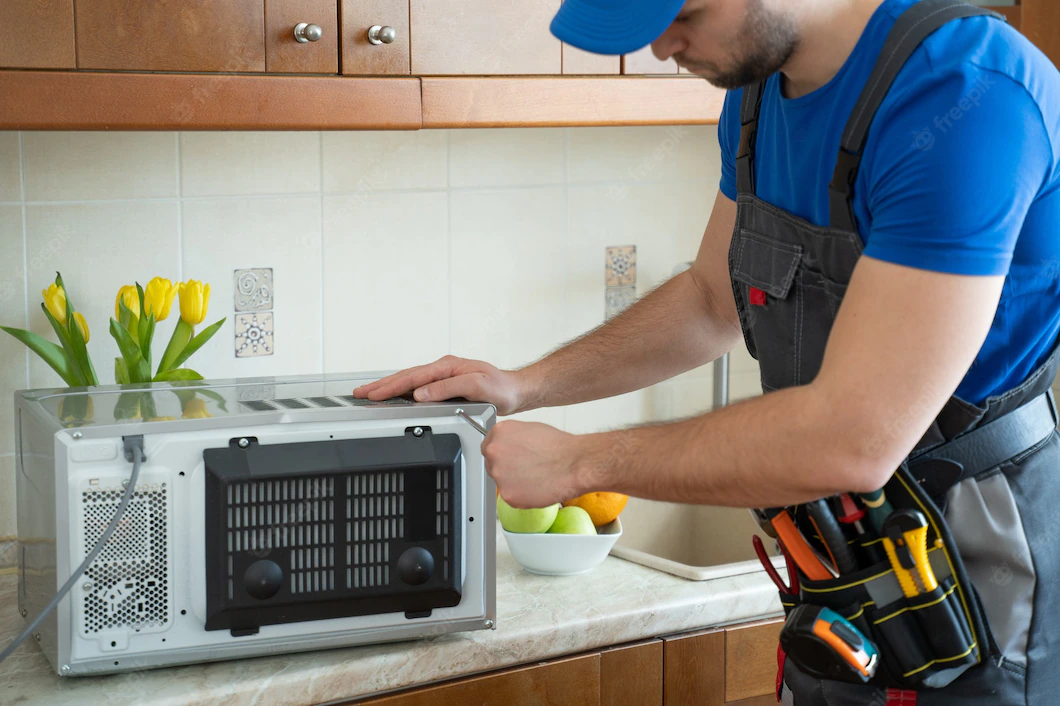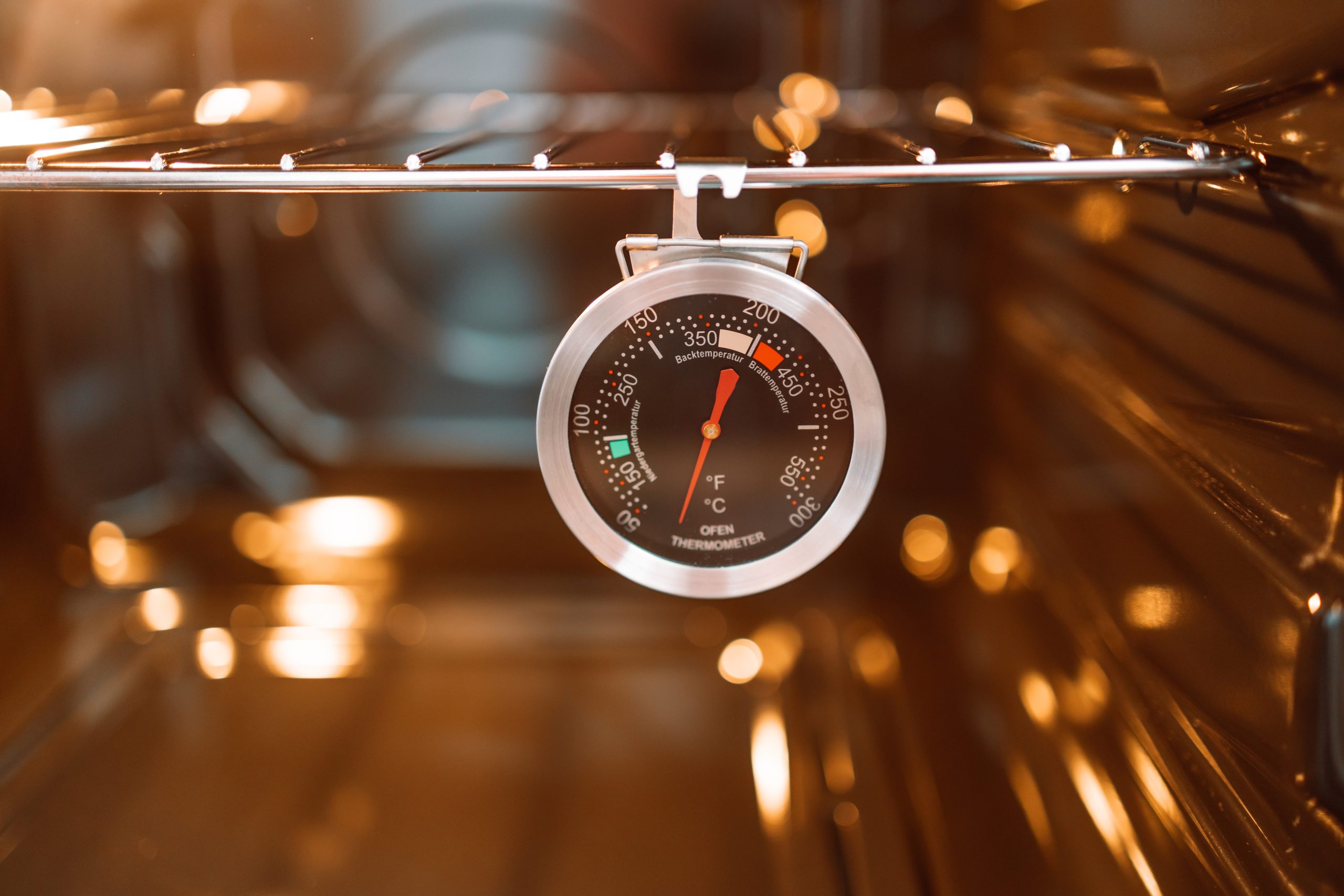Microwaves make it fast and easy to heat up leftovers, prep food, and cook a variety of foods from scratch. Regularly cleaning and maintaining your microwave will prolong its lifespan, which is typically between 7 and 10 years.
Proper Installation
We don’t often think of microwaves as an appliance that needs to be installed. While it only needs to be plugged in, you can ensure proper installation with the tips below.
- Consider if it is sharing a circuit breaker with your fridge or oven. This can be problematic in older homes.
- If your home is older, also be sure to check the wattage of your microwave and your outlets. You may need an upgrade before use.
- Ensure it has enough airflow to properly circulate air while it cooks. Leave at least an inch between the back and the wall or cabinet, and 3 inches on the sides if placed next to other countertop appliances.
- Don’t operate it in direct contact with other heat sources as this can cause it to overheat.
- Don’t stack other appliances or knickknacks on top as the weight can cause damage and premature wear.
Keep it Clean
Microwaves warm food from the inside out, causing inevitable splatters. These splatters can cause the build-up of food particles. These particles will continue to absorb energy when turned on, which can overwork your microwave.
Utilizing a microwave-safe food topper or paper towel will minimize the mess. When the mess is significant, wipe it down directly after use while the particles are still warm and easy to wipe away.
Deep clean once a month by adding 1 cup of water and a splash of vinegar to a microwave-safe cup or bowl. Microwave on high for 3 to 5 minutes and let steam for up to 5 minutes. This will loosen most of the food particles for fast and easy wipe down.
Unplug and wipe down the exterior and ensure the vent is free of dust and pet hair.
Don’t Microwave Metal or Non-Microwavable Plastic
Cleaning and maintaining your microwave includes knowing what you can and can’t place inside.
- Aluminum foil is so thin that the electrical waves will flow through the metal. In addition to the fact that your food won’t heat, https://science.howstuffworks.com/aluminum-foil-in-the-microwave.htmthe foil can overheat and ignite.
- Silverware is thicker so the electrical waves won’t flow through. Instead, the metal causes the waves to bounce around in an inefficient manner that can burn out your appliance.
- With the decorative design of many reusable mugs, you may forget that they are aluminum or steel lined. So, you can’t place them in the microwave to reheat beverages.
- Dishes of any material that aren’t microwave-safe can crack or break.
- Plastics that aren’t microwave-safe can melt into your food and melt onto the tray. Ingesting melted plastic poses a variety of health concerns and the melted plastic on the tray will continue to cook each time you turn your microwave on.
Maintaining Your Microwave – Food the Wrong Way
Yes, there is a wrong way to microwave certain foods. The electrical waves build internal pressure. So, if you will be microwaving something like a potato or a whole squash, you need to poke it several times with a fork first. And you should never microwave an egg with its shell on.
Potatoes, squash, and eggs with the shell on can expand, explode, and damage your microwave.
Maintaining Your Microwave – Your Sponge
Cleaning and maintaining your microwave go hand-in-hand with cleaning and maintaining your home. While microwaving your kitchen sponge is an effective DIY hack, it’s a bit of a double-edged sword.
If your sponge contains salmonella, staphylococcus, or bacteria—you will release these contaminants into your microwave. They can enter your food the next time you turn it on.
So, if you must, clean your sponge and immediately disinfect the interior of your microwave.
Be Gentle
We’re all in a hurry, but be mindful not to slam the door shut or press the buttons too hard. Even if your hands are full, maintaining your microwave is essential. Using your elbow to close the door can close it too hard.
The door may still close, but it may allow the electric waves into your home. This is not only less efficient, but it can be dangerous for you and your family.
If you wear out-the-door mechanics or the control pad buttons, it will likely be less expensive to buy a new appliance than have them fixed.
Running While Empty
It can happen by accident when you pause or open the door before the set time. However, running your microwave while empty will cause it to absorb its own microwaves. This may not sound problematic, but it can kill your microwave in as little as 10 seconds.
Know Your Weight Capacity
If you place a large, oversized, or heavy item in your microwave you run the risk of breaking the turntable. You can also prematurely burn out the motor or magnetron.
It can be easy to forget about weight when warming up frozen foods. Even if an item or tray isn’t heavy, if it’s oversized it can create resistance that can lead to damage.
If you aren’t sure, most microwaves have their weight capacity printed on the door. Or you can perform a quick online search for the weight capacity of your make and model.
Service Your Microwave Annually
In addition to cleaning and maintaining your microwave yourself, have all of your home appliances serviced once per year. This will catch many minor problems before they evolve. For ease, most homeowners have their appliances inspected at the same time each year.
Signs your microwave is at the end of its life or in need of repair include:
- Smoke, sparks, or a burning smell mean you should unplug it, cease use, and replace it immediately.
- If food is no longer cooking as fast as it used to it may be in need of repair or replacement.
- If it’s making an odd noise, check for food particles or a misaligned turntable. If those aren’t the cause you may need a new microwave.
Having Microwave Troubles?
Superior Appliance Repair can inspect, repair, or advise on upgrading your microwave. In many cases, the upgrade costs less than a service visit. But if you have a high-end, industrial, or microwave that is still under warranty—it may be worth a service visit. Or if we’ll be at your home or business inspecting or repairing other appliances, we can take a look at your microwave while we’re there.
We are available for same-day and next-day appointments in the Santa Barbara area 7 days a week from 7 am to 9 pm. Book now!




